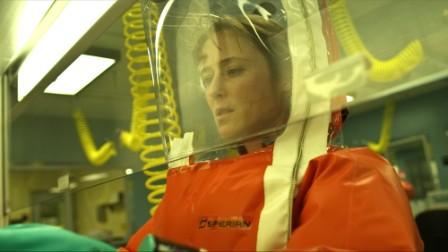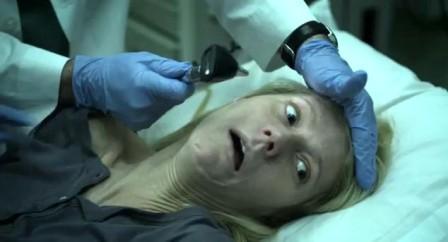
Maybe
he’s retiring, maybe
it’s just a sabbatical. (And, either way, he still has
Haywire in the can and
Magic Mike,
The Man From U.N.C.L.E., and a Liberace biopic on his plate, not to mention
second unit work on The Hunger Games.) Still, as the
crisp, dark, and intelligent Contagion once again makes clear, Hollywood will lose one of its most interesting working directors when Steven Soderbergh decides to hang up the clapperboard.
Less adventurous and more satisfying in its storytelling than Soderbergh’s last major film, 2009’s The Informant!, Contagion basically applies the Traffic technique of several separate, loosely interweaving tales told around the globe (albeit this time with a more subdued color palette) to spin a harrowing chronicle of a possible pandemic. The main reason the film works so well is because Contagion is actually not the end-of-times pestilence thriller the (spoilerish) trailers make it out to be. Rather, and much like David Fincher’s Zodiac, it’s mainly a smart, well-told procedural, and it’s the grounded, matter-of-factness of Contagion that ultimately makes it so frightening.
Contagion telegraphs its unsentimental, take-no-prisoners approach to the story in the first five minutes, when, after returning home to Minneapolis from a business trip to Macau (and a brief layover in Chicago), Gwyneth Paltrow starts having trouble breathing and [minor spoiler] promptly drops dead. Soon, her family (including a low-key, earnest Matt Damon) are in quarantine, and the CDC Director in Atlanta (Lawrence Fishburne) has dispatched an epidemiologist (Kate Winslet) to coordinate with local officials on plans for a possible outbreak. (FWIW, the Minnesota Department of Health is not amused with the film.) But, unfortunately for the world, the barn door is already open: This new MERS-1 virus — part-bat, part-pig — has already been unleashed, and not just in Minneapolis, but in cities all over. (Turns out, Oceans 14 in Macau was a terrible idea.)
As the situation worsens around the world, we start following more individuals on the frontlines in various locales: A CDC researcher (Jennifer Ehle) working to find a cure for this new plague. An academic biologist (Elliot Gould) trying to isolate the virus in San Francisco. A WHO official (Marion Cotillard) and Chinese doctor (Chin Han) looking to discover who was Patient Zero in Macau. Two homeland security suits (Brian Cranston and Enrico Colatoni) sent to determine if this is the work of the terr’ists. A blogger (Jude Law) firmly convinced of government conspiracies and homeopathic wonders. And all the while, even as secrets pass from person to person and fear mutates into panic, the virus continues to spread. Ain’t no Patrick Dempsey monkey gonna solve this one, I’m afraid.
There’re plenty of stars and recognizable faces flitting about this story — some have more to do than others. (The Cotillard subplot seemed a bit unnecessary to me, to be honest, and the Jude Law one is basically just an extended screw-you to the vaccines-cause-autism crowd.) But, as I said, Contagion‘s killer app is its versimilitude. The movie never talks down to its audience, or has its scientists repeating expository information over and over again. (For example, it explains once what a “R-naught” is and assumes you can keep up from there.) It doesn’t have scientists (or Matt Damon, for that matter) running around trying to catch infected monkeys with helicopters — The excitement mostly comes from watching scientists and bureaucrats do their job well. And I liked the fact that, even though no one is safe here, Contagion doesn’t feature some kind of sci-fi-ish, humanity-obliterating virus. It’s a nasty bug with, iirc, a 25% fatality rate — In other words, a more virulent version of the 1918 influenza epidemic — making the story that much more plausible, and scary.
Speaking of scary, I should say that, back in the real world, I’m a pretty sanguine sort about germs, and so I found Contagion more unsettling than anything else. But if you’re at all of the germophobe persuasion, hoo boy — You’re going to have a tough time at this one. From infecteds hacking up a lung on a public bus, to waiters wiping down bar glasses with a dirty rag, to people endlessly and unconsciously touching rails, bannisters, buttons, and each other, Soderbergh does a great job here of intimating that human beings inadvertently leave a slime trail of germy death wherever we go — not the least in movie theaters, exactly like the one you’re sitting in. Point being, [cough, cough], OCD-ish folks will probably want to Netflix this one, instead.





